Last Updated on June 3, 2023
[ヴィーガンキムチ味噌ラーメン]
Vegan Kimchi Miso Ramen is a easy-to-make Japanese & Korean fusion ramen dish with a spicy, rich and aromatic miso broth. Say good-bye to flavorless instant noodles and make this delicious home cooked vegan kimchi miso ramen!
Vegan Kimchi Miso Ramen
If you ever travel to Japan, you will notice ramen shops are on almost every corner. Each shop offers their own originality and takes pride in making there bowls of ramen, a work of art!
There are so many different flavors to choose from and kimchi miso ramen is one of them.
Ramen has always been my no.1 choice of comfort food and I grew up eating ramen at least once a week. I can honestly say miso ramen has always been one of my favorite ramen of all! The rich and savory miso ramen broth is very much comforting when you slurp it with chewy noodles.
In Japan, miso ramen comes with a variety of toppings and flavor variations such as:
- Butter corn miso ramen
- Vegetable miso ramen
- Cheese miso ramen
- Kimchi miso ramen etc.
When I was a child, I would only eat butter corn miso ramen or veggie miso ramen. But as I got older, I developed the love towards spicy foods and that’s when I fell in love with kimchi miso ramen.
As we say, becoming a vegan doesn’t mean sacrificing the taste of what you’d always enjoyed eating. My kimchi miso ramen is definitely one of them.
It’s so rich, comforting, and pleasantly spicy. The best of all it’s very easy to make but the result is how I remembered what authentic Japanese kimchi ramen tasted as.
If you’re a ramen lover, it’s a definite must try!
Vegan Kimchi
Good vegan kimchi miso ramen needs good kimchi.
There are many “pretend-to-be-kimchi” type of pickles sold in stores in the US but in my opinion, they’re far from the real deal. Besides that, when you find good promising looking authentic kimchi, often times they aren’t vegan.
That’s why I make my own vegan kimchi at home. While Making kimchi is not a quick process, it’s fairly easy to make and best of all you can customize to your desired taste.
My vegan kimchi has napa cabbage, sea salt, garlic, ginger, onion, daikon radish, carrot, scallion, apple, dulse flakes, and gochugaru. After fully fermented, it gives such a unique and complex taste and it just gets better as it sits in the fridge!
I use the vegan kimchi to make vegan kimchi fried rice, kimchi pasta, and this vegan kimchi miso ramen.
Whether homemade or store-bought, I’d recommend using really good vegan napa cabbage kimchi of your choice!
Broth for Vegan Kimchi Miso Ramen
What makes good ramen is the broth.
With the combination of savory miso and gochujang, it’s so rich and irresistible!
If you have old (longer fermented) kimchi in the fridge, it’s the best for making kimchi soup and the ramen soups as well. They’re a bit tangier than the younger (newly made) kimchi. But the acidity and the umami taste from the fully fermented kimchi contribute to the complex flavored broth.
To counterbalance the acidity of kimchi, I use sugar. It doesn’t make it sweet (unless you put a lot) but the tanginess gets milder. I also add extra gochugaru to make the broth extra spicy.
For the miso, I use my go-to koji miso. Koji miso is made with extra rice koji (rice with Aspergillus oryzae mold) which makes the miso slightly on the sweeter side than the regular miso.
You can certainly make one with whatever the miso that you have on hand!
Choice of Vegan-Friendly Ramen Noodles
The broth is an important aspect of ramen but choosing the noodles is just as important! You want the noodles that go very well with the broth to pick up all the goodness.
My go-to ramen noodles are Kaedama from Sun Noodle. If you live in the US, you can order online. It’s not organic but for the taste and texture for making authentic ramen, I highly recommend it.
With the kaedama noodles, I also make cold ramen and yakisoba.
Otherwise, you can use any ramen noodles of your choice to make this Vegan Kimchi Miso Ramen!
Be sure to check out the “Step-by-Step Instructions (w/ Photos)” after the Printable Recipe!
Vegan Kimchi Miso Ramen
Ingredients
- 1 tbsp neutral oil
- 3 cloves garlic minced
- 1- inch ginger knob minced
- 1/2-3/4 cup vegan kimchi use any vegan napa cabbage kimchi of your choice
- 2 tsp gochujang
- 3 cups purified water
- 1/4 cup miso paste
- 1 1/2 tsp cane sugar
- A pinch of sea salt optional
- 1/2 tsp gochugaru adjust to taste
- 2 servings uncooked ramen noodles of your choice
- 2 scallions thinly sliced
- 2 tsp toasted sesame oil
- Toasted sesame seeds optional
- Extra kimchi optional
Instructions
- Start boiling water in a large sauce pan for cooking ramen noodles.
- Meanwhile, prepare the ramen broth. Heat up a medium sauce pan at medium to medium-high heat. Pour neutral oil and add garlic and ginger. Cook for about 1-2 minutes until aromatic and the garlic is slightly crispy.
- Next, add kimchi and gochujang. Cook for about 2 minutes. Then, add water and turn up the stove on high heat to bring it to a boil. Once it’s boiling, reduce the heat to medium low and let it simmer for 2-3 minutes.
- Reduce the heat to low. Add miso paste and dissolve into the soup. To do so, place the miso on a ladle and partially submerge it in the broth to slowly incorporate the broth into the ladle. Use long cooking chopsticks (or a small whisk) to stir the miso gently in the ladle to let it dissolved. Stir well.
- Add sugar then adjust the seasonings with sea salt if necessary. Turn up the heat to medium-high to reheat the broth.
- Start cooking your choice of ramen noodles according to the instruction on the package. Right before the ramen noodles are done, pour the hot broth into a serving bowl.
- Once the noodles are done, drain well and add to the broth. Let the noodles gently swim in the broth to prevent the noodles from sticking together.
- To serve, top it with scallions, toasted sesame oil (1 tsp per serving), toasted sesame seeds (optional), and extra kimchi (optional.)
Notes
Vegan Kimchi
- Be sure to look for vegan kimchi (made with napa cabbage) like my homemade Vegan Kimchi.
- Every kimchi taste different in saltiness, spiciness and sourness depending on the level of fermentation. Adjust the amount to your preference.
- “Sauerkraut type” imitation kimchi isn’t recommended.
Gochujang
- Gochujang is Korean fermented red chili paste. It tastes spicy, savory and sweet.
- Every gochujang taste different. Adjust the amount to your preference.
- I use Mother-in-Law’s Gochujang (Original.)
Choice of Miso
- Any miso would work for this recipe.
- My go-to multipurpose miso is koji miso (soybean-base miso with a substantial amount of rice koji) of any kind. It’s still savory but koji makes it slightly sweet!
Gochugaru
- Gochugaru is Korean dried red chili pepper flakes.
- You can easily find one at Korean grocery stores and online stores. I use Gochugaru from Mother-in-Law’s Kimchi.
- You can adjust the amount to your taste.
Choice of Vegan Ramen Noodles
- Use any ramen noodles of your choice.
- Be sure to choose egg-free ramen noodles (many ramen noodles contain eggs.)
- I use Kaedama from Sun Noodle. I love the chewy texture and the authentic ramen noodle taste! Highly recommend it.
Step-by-Step Instructions (w/ Photos)
Preparation: Have all the veggies cut and measure some of the key ingredients for easier cooking process. Note: neutral oil, water, salt, sugar, toasted sesame oil, and toasted sesame seeds are not shown in the photo below.
1. Start boiling water in a large sauce pan for cooking ramen noodles.
2. Meanwhile, prepare the ramen broth. Heat up a medium sauce pan at medium high heat. Pour neutral oil and add garlic and ginger. Cook for about 1-2 minutes until aromatic.
3. Next, add kimchi and gochujang. Cook for about 2 minutes.
Then, add water and bring it to a boil.
Once it’s boiling, reduce the heat to medium low and let it simmer for 2-3 minutes.
4. Reduce the heat to low. Add miso paste and dissolve into the soup. To do so, place the miso on a ladle and partially submerge it in the broth to slowly incorporate the broth into the ladle. Use long cooking chopsticks (or a small whisk) to stir the miso gently in the ladle to let it dissolved. Stir well.
5. Add sugar then adjust the seasonings with sea salt if necessary. Turn up the heat to medium-high to reheat the broth.
6. Start cooking your choice of ramen noodles according to the instruction on the package.
Right before the ramen noodles are done, pour the hot broth into a serving bowl.
7. Once the noodles are done, drain well and add to the broth. Let the noodles gently swim in the broth to prevent the noodles sticking together.
8. To serve, top it with scallions, toasted sesame oil (1 tsp per serving), toasted sesame seeds (optional), and extra kimchi (optional.)
If you enjoy the recipe, please share, leave a comment below and tag us @plantbased_matters on Instagram! We appreciate your kind support 🙂
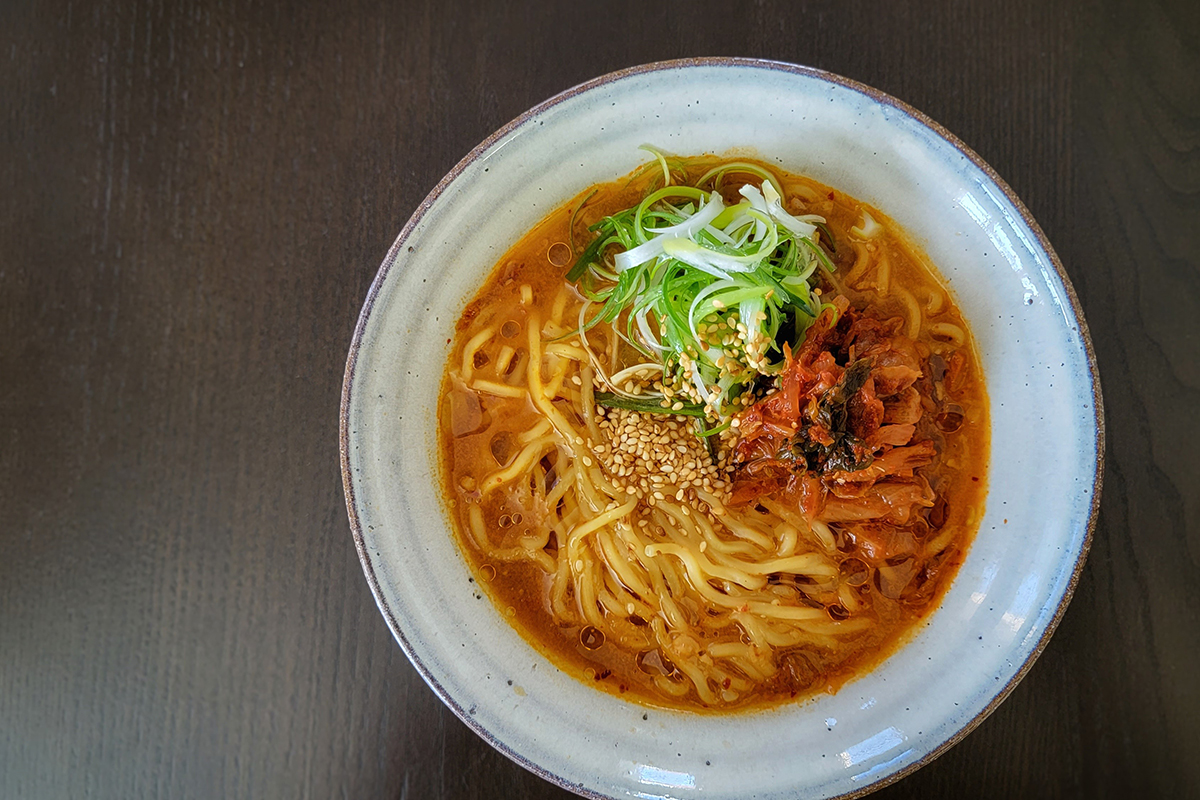

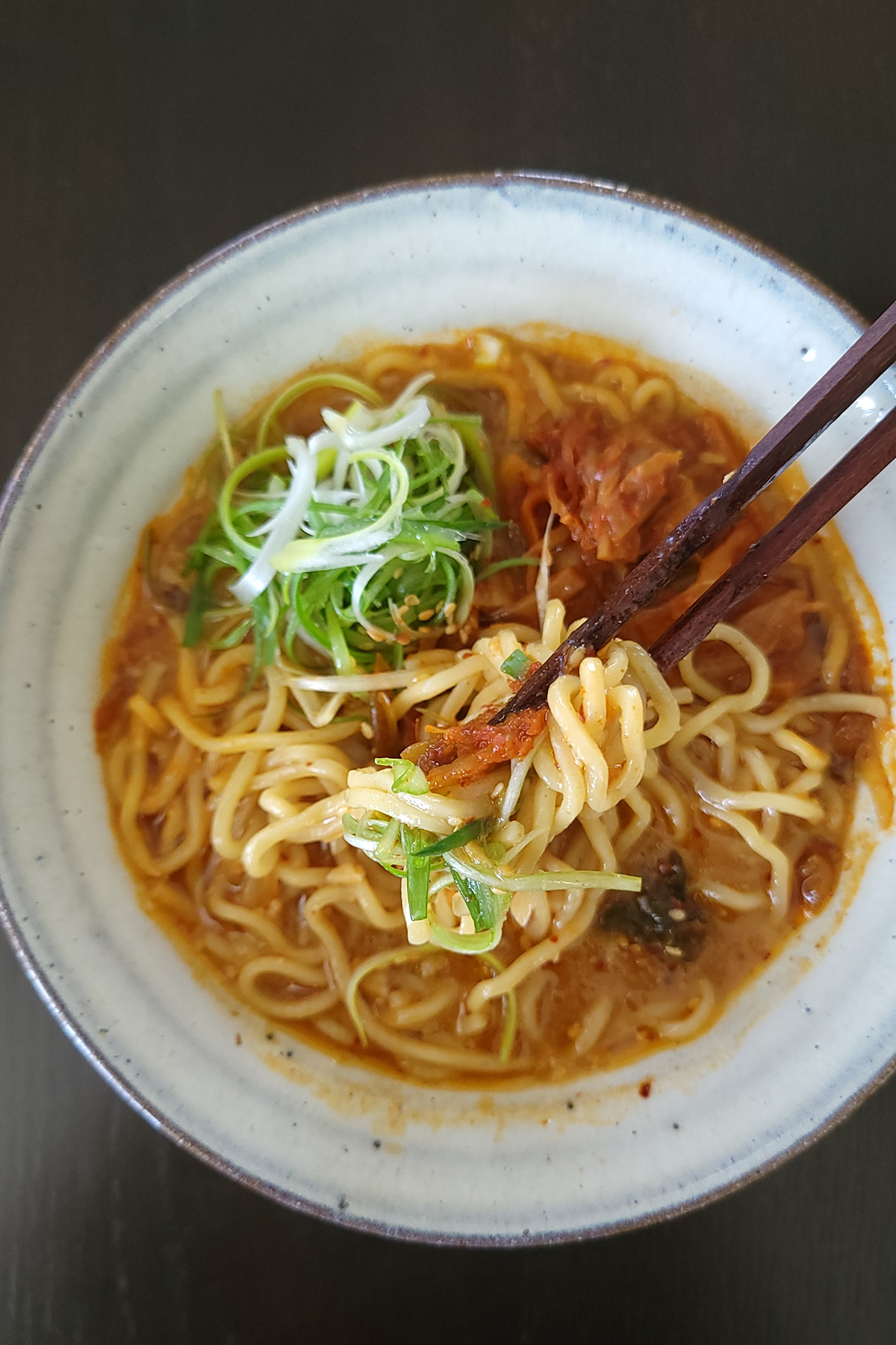
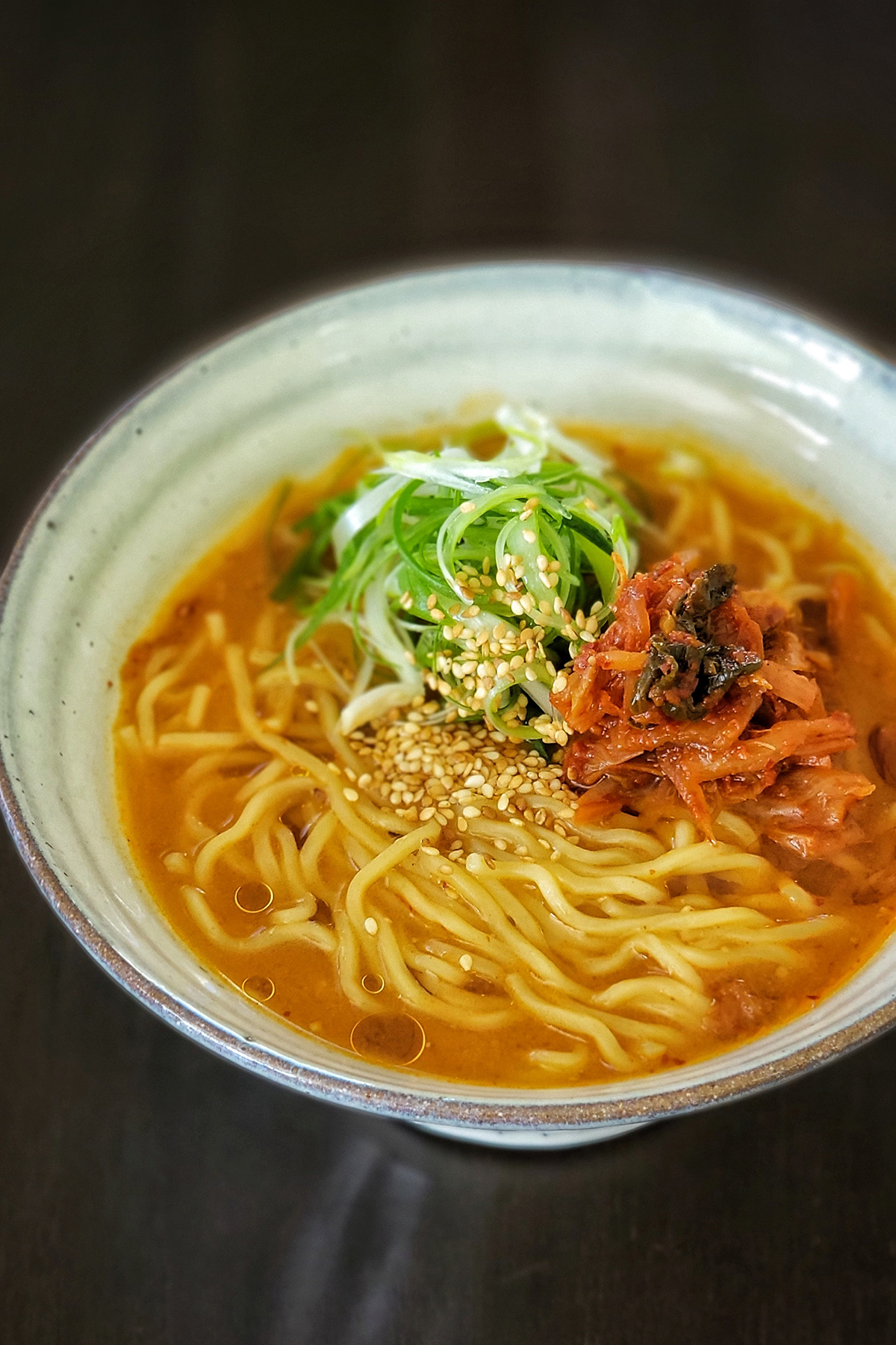
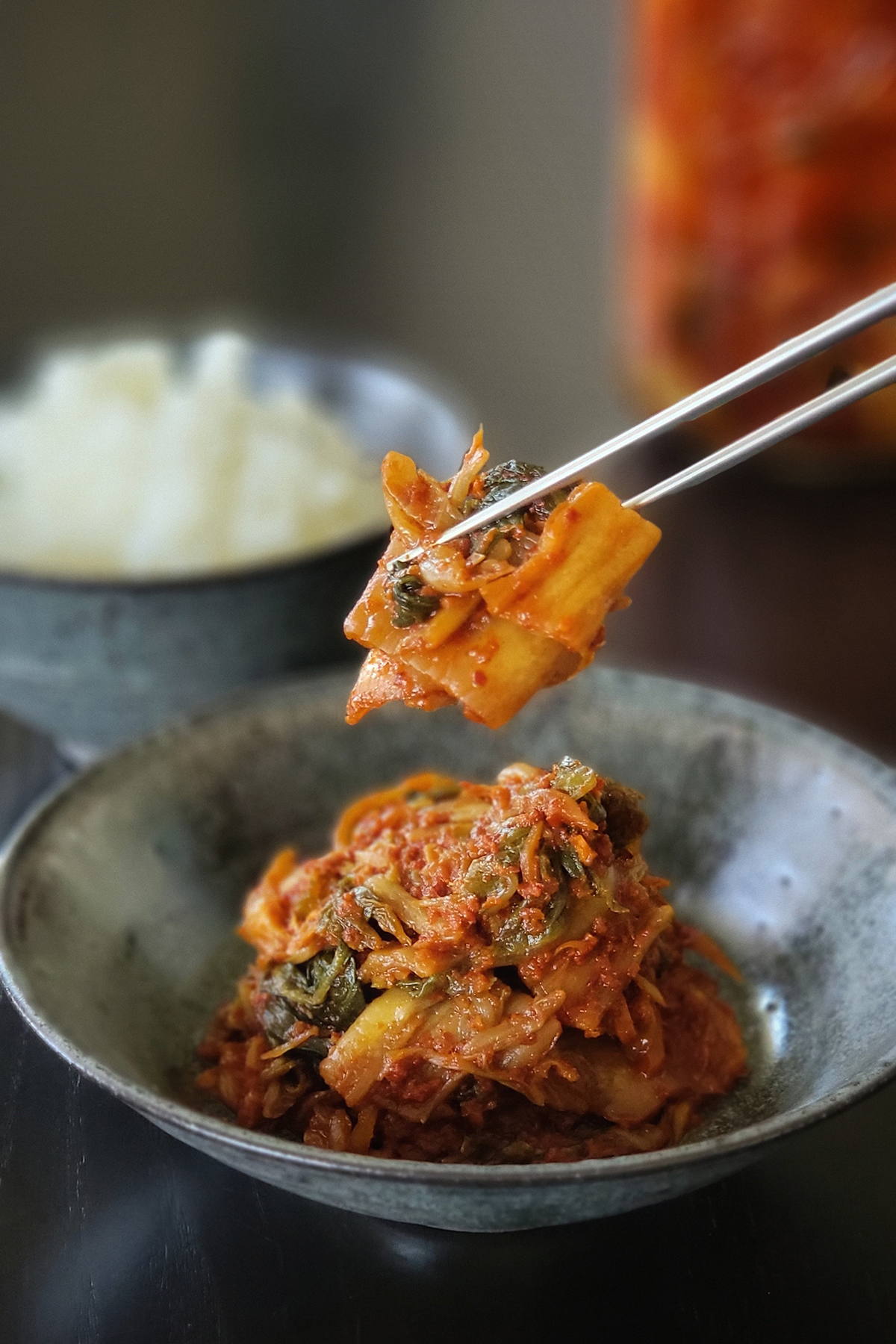
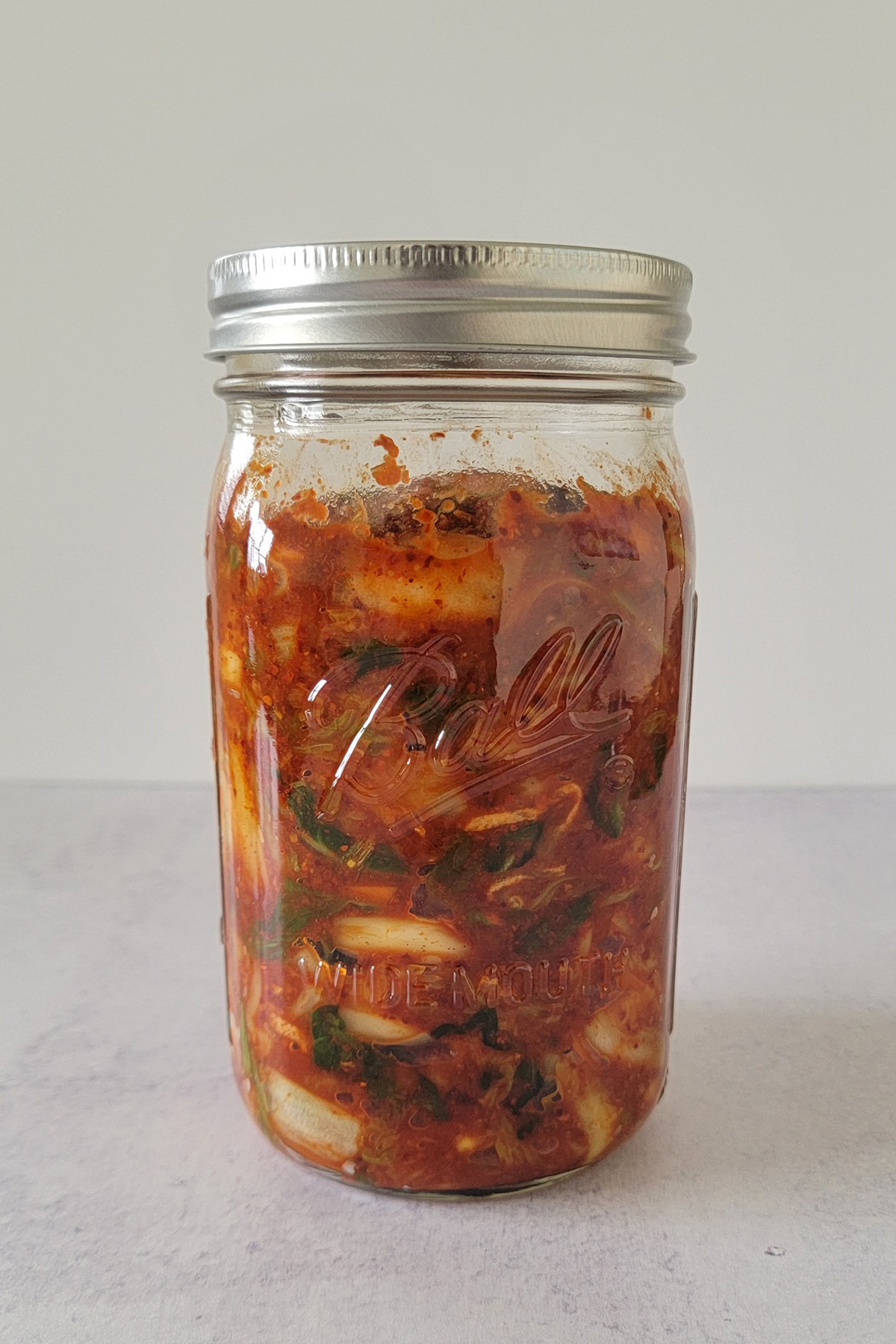
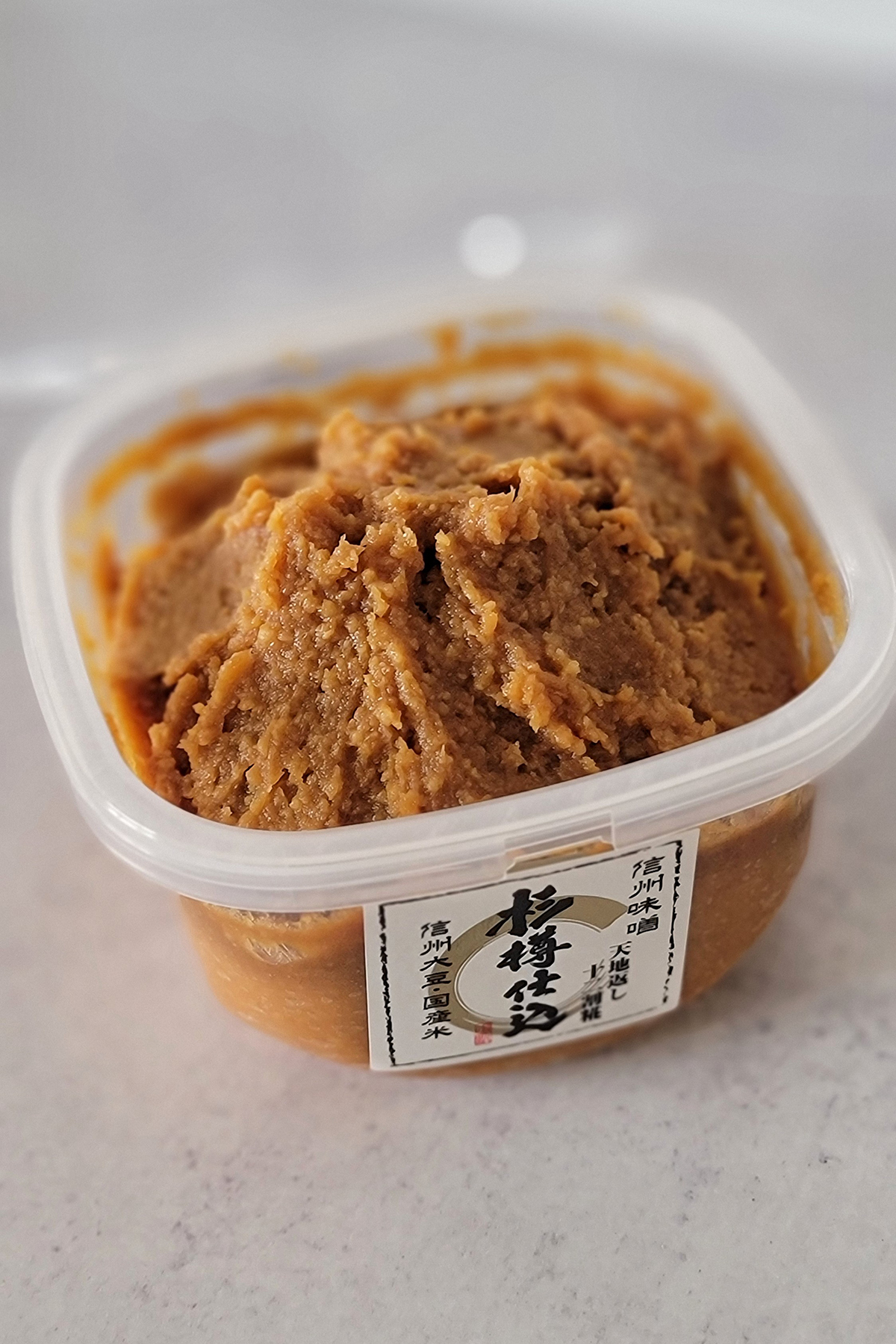
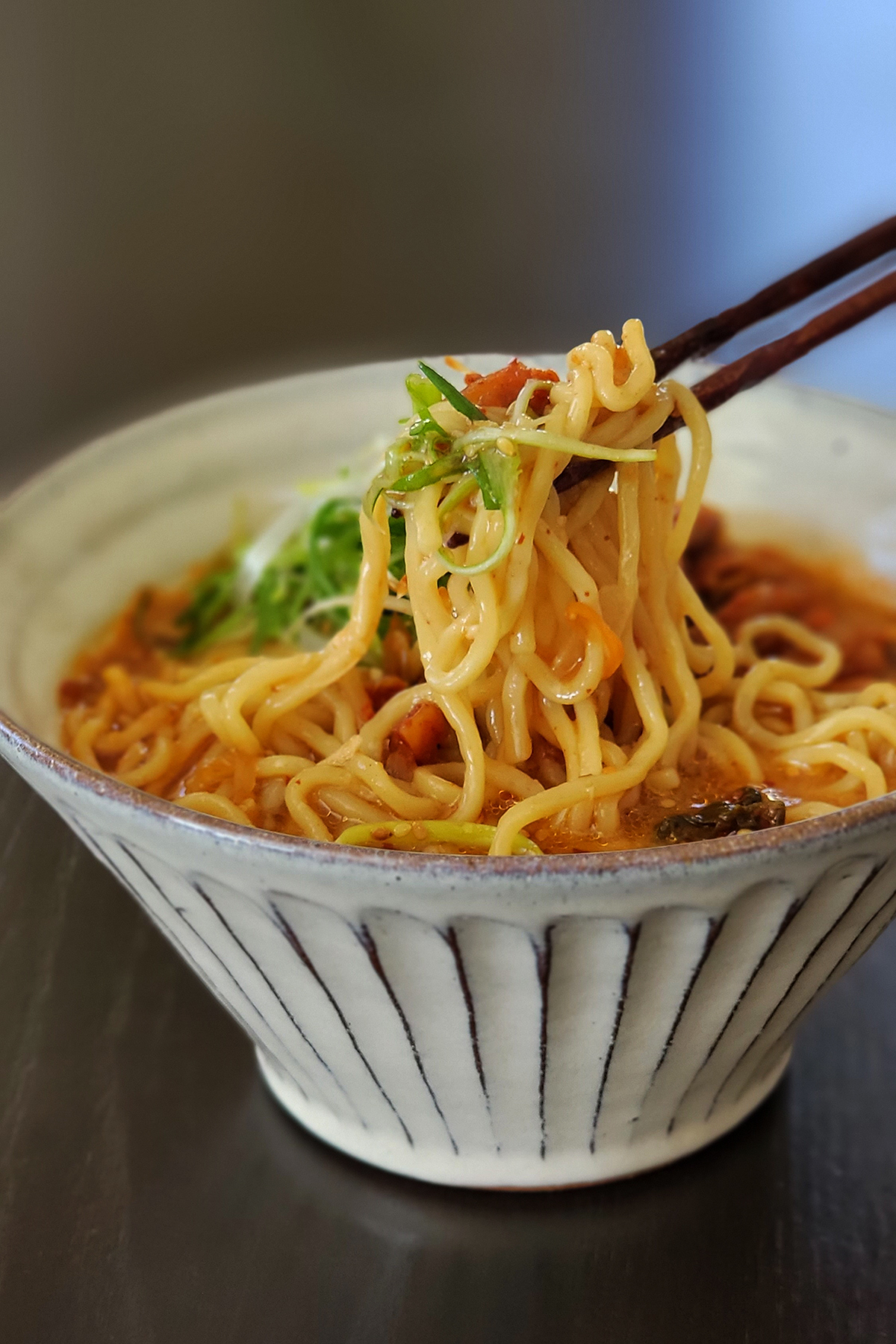
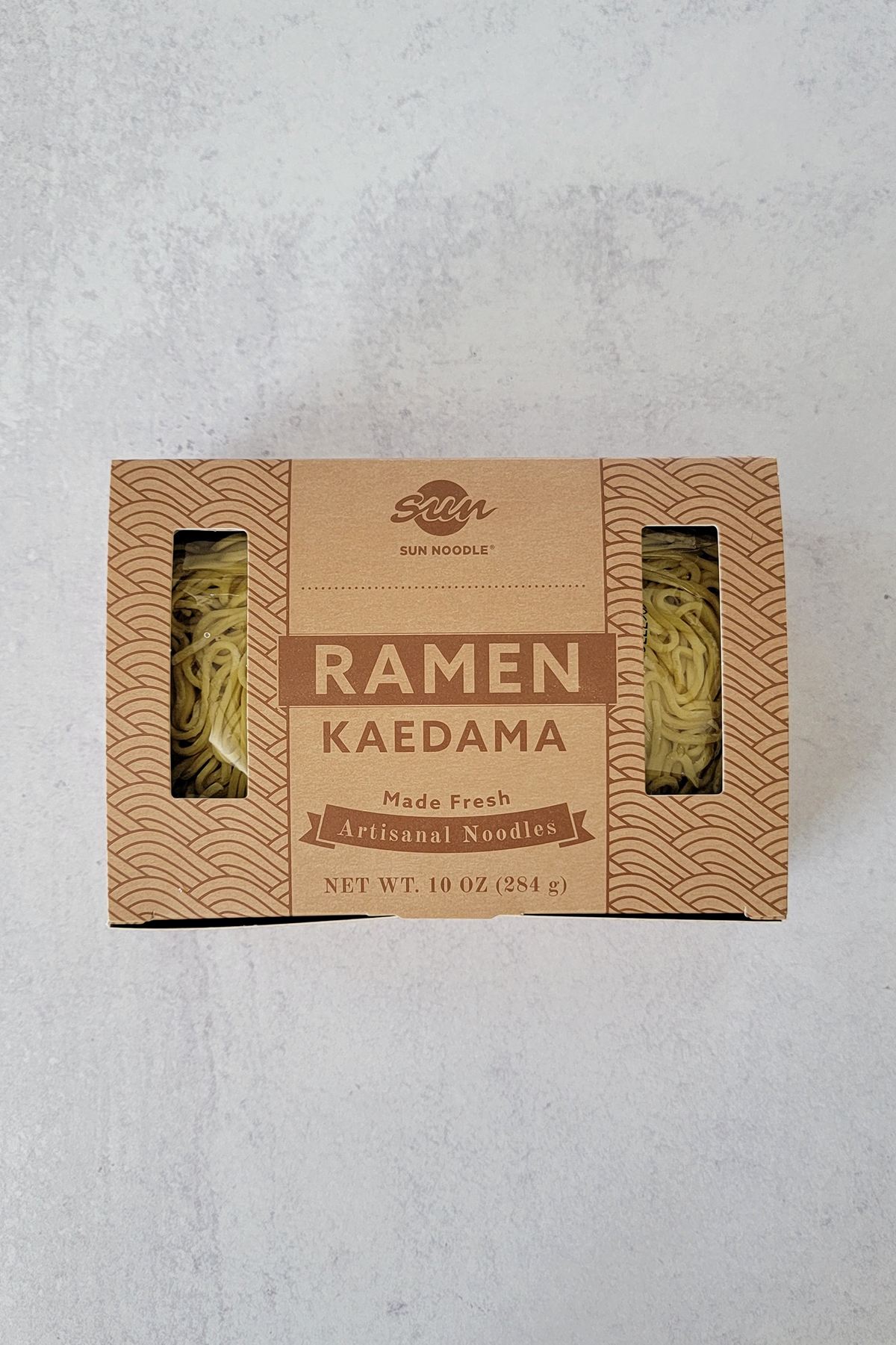
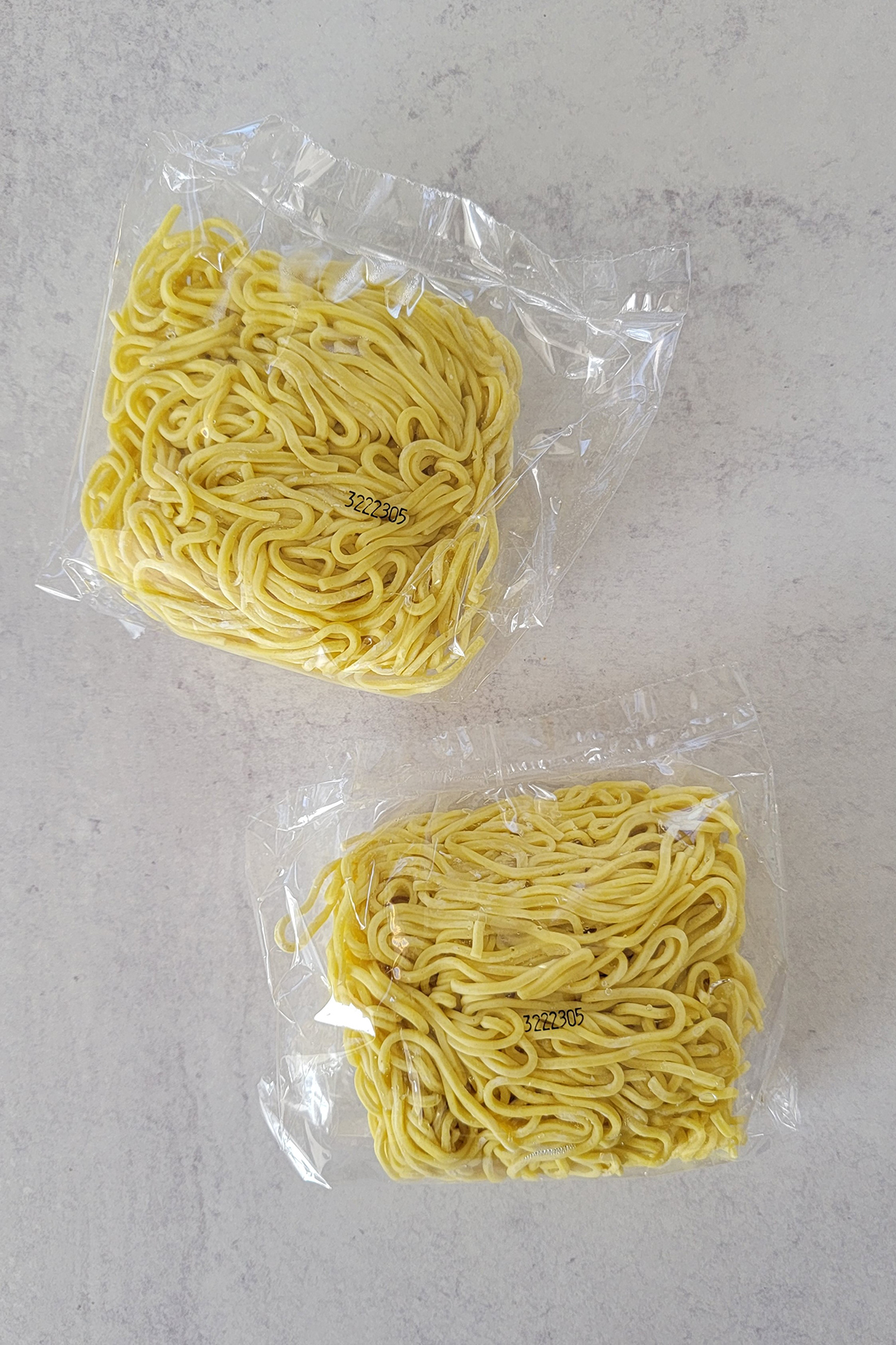
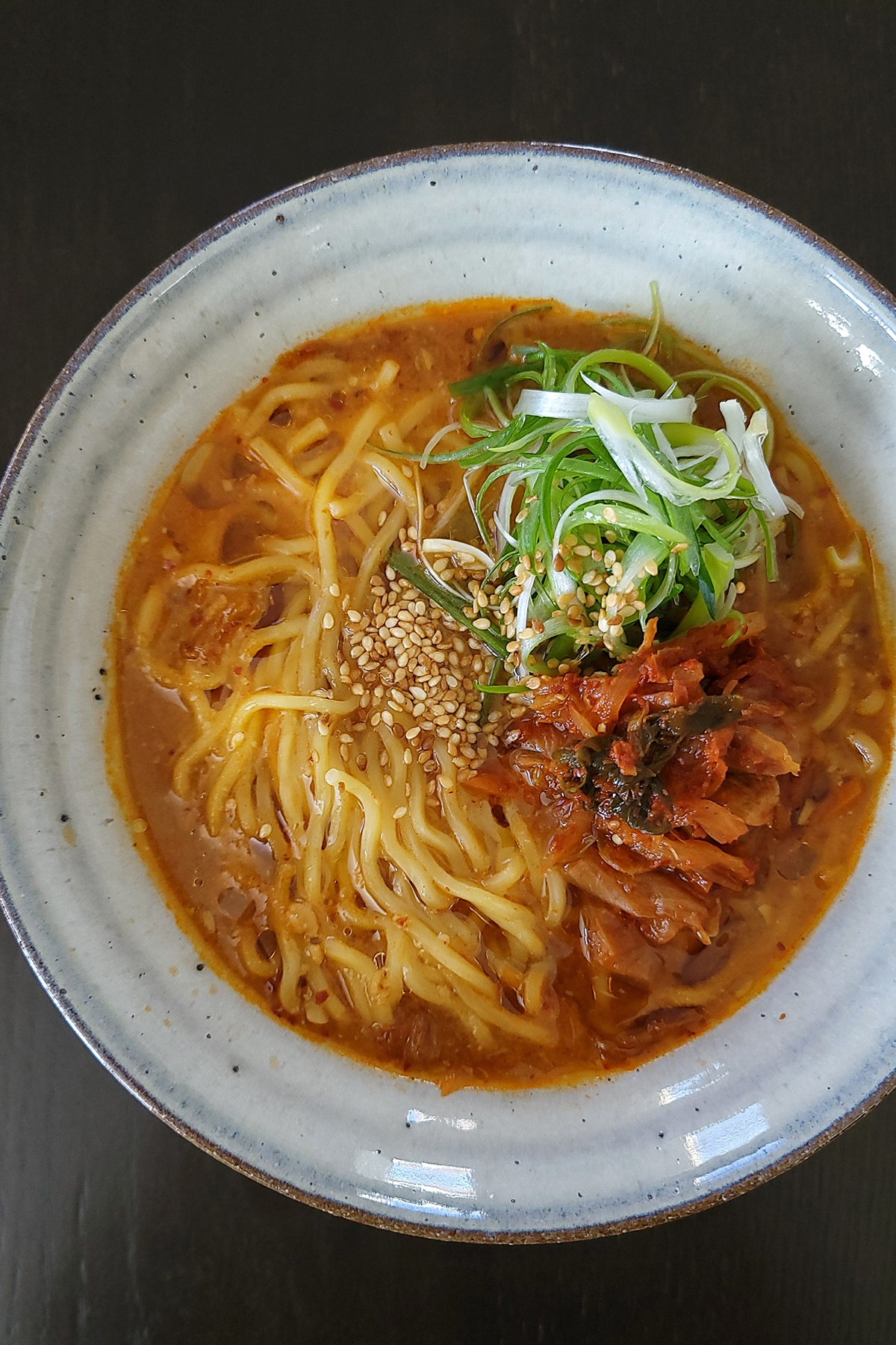
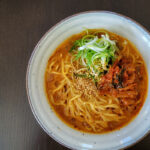

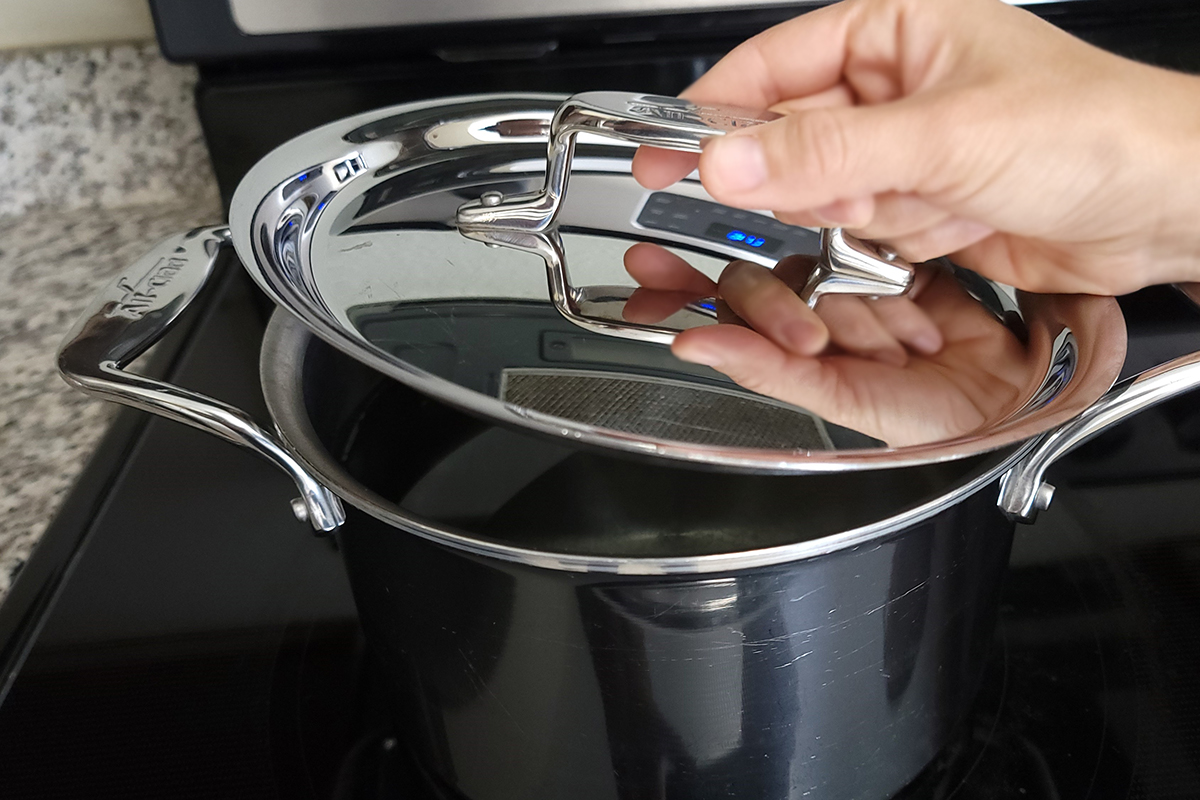
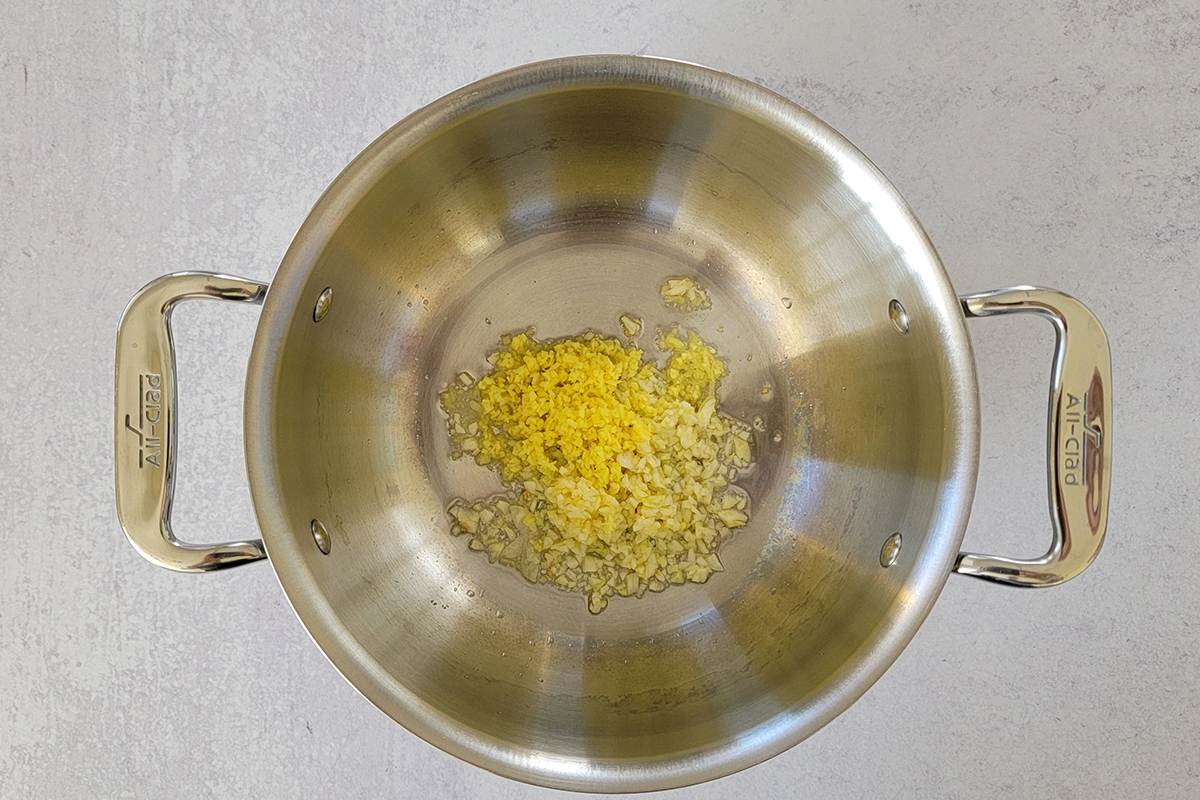

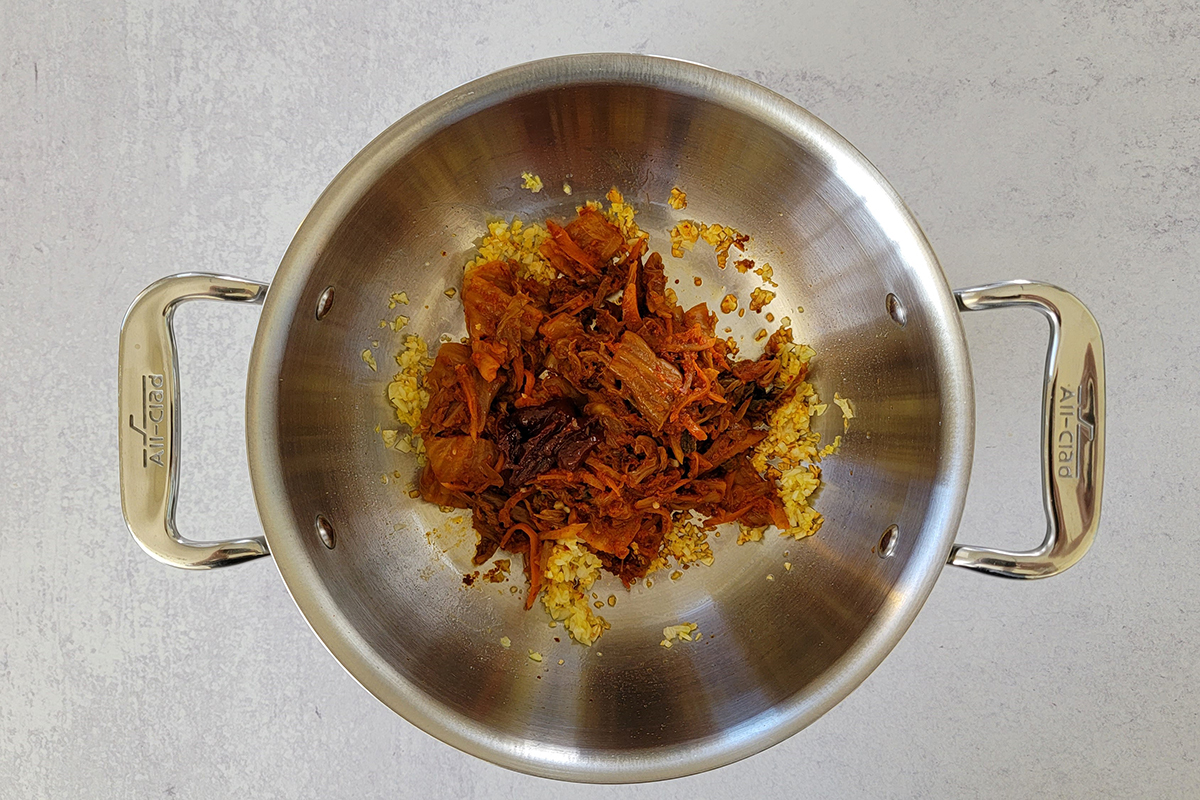
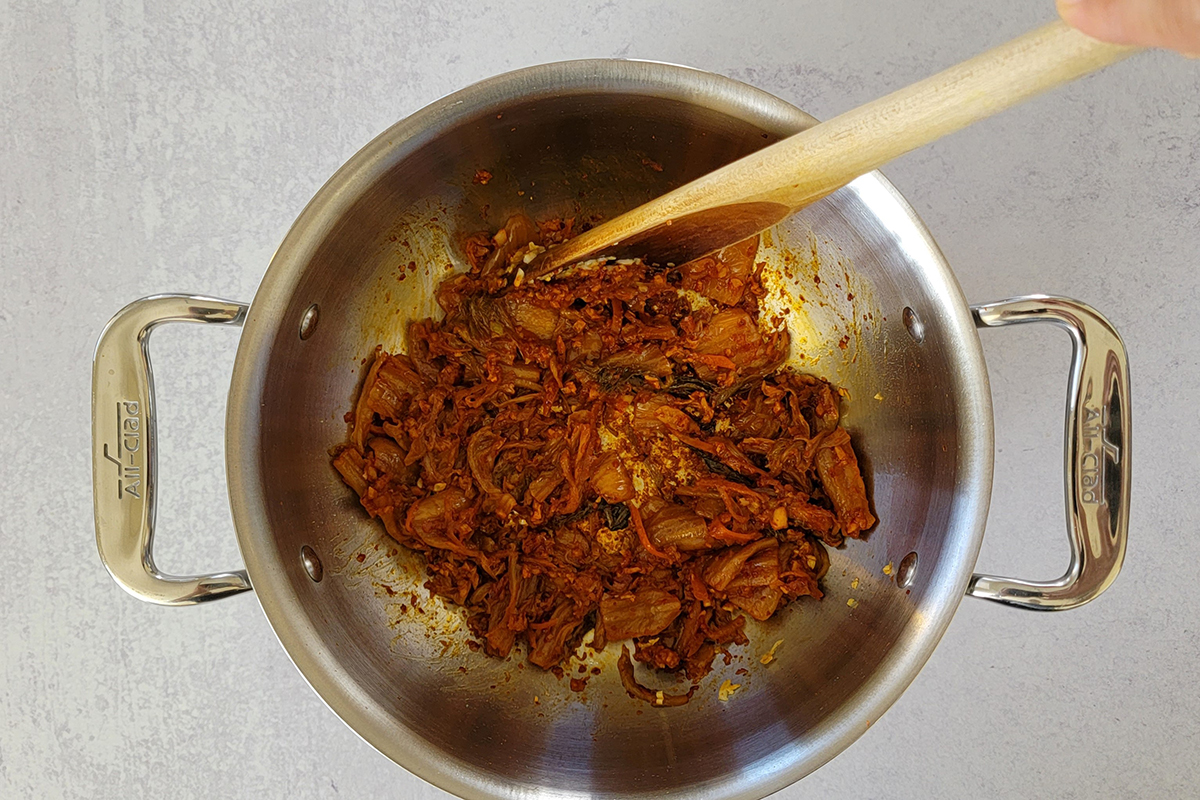
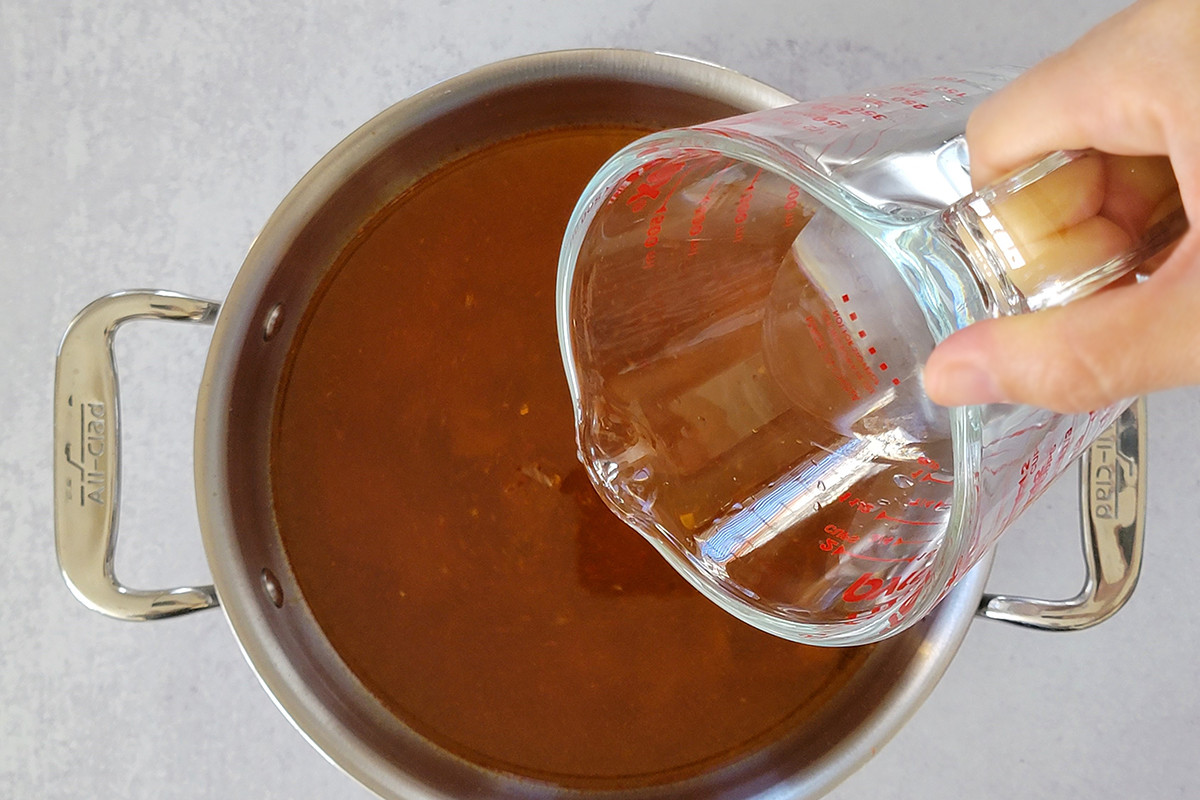
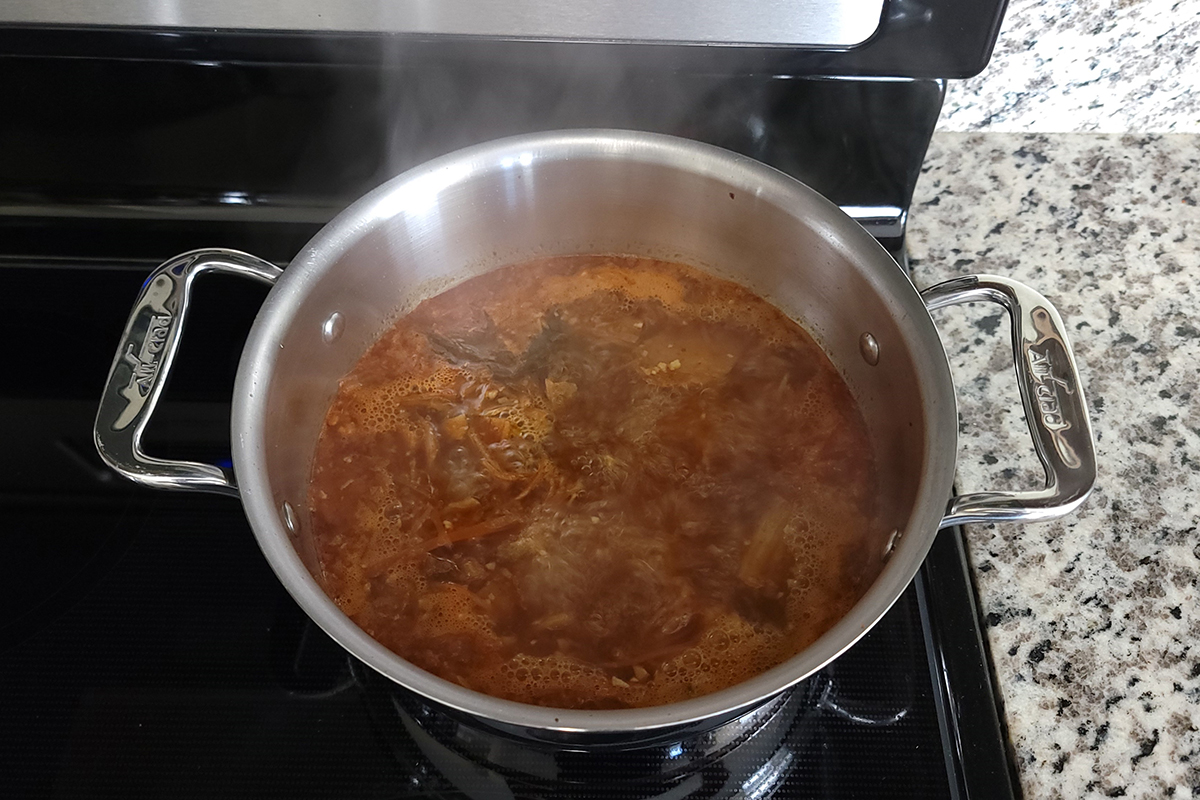

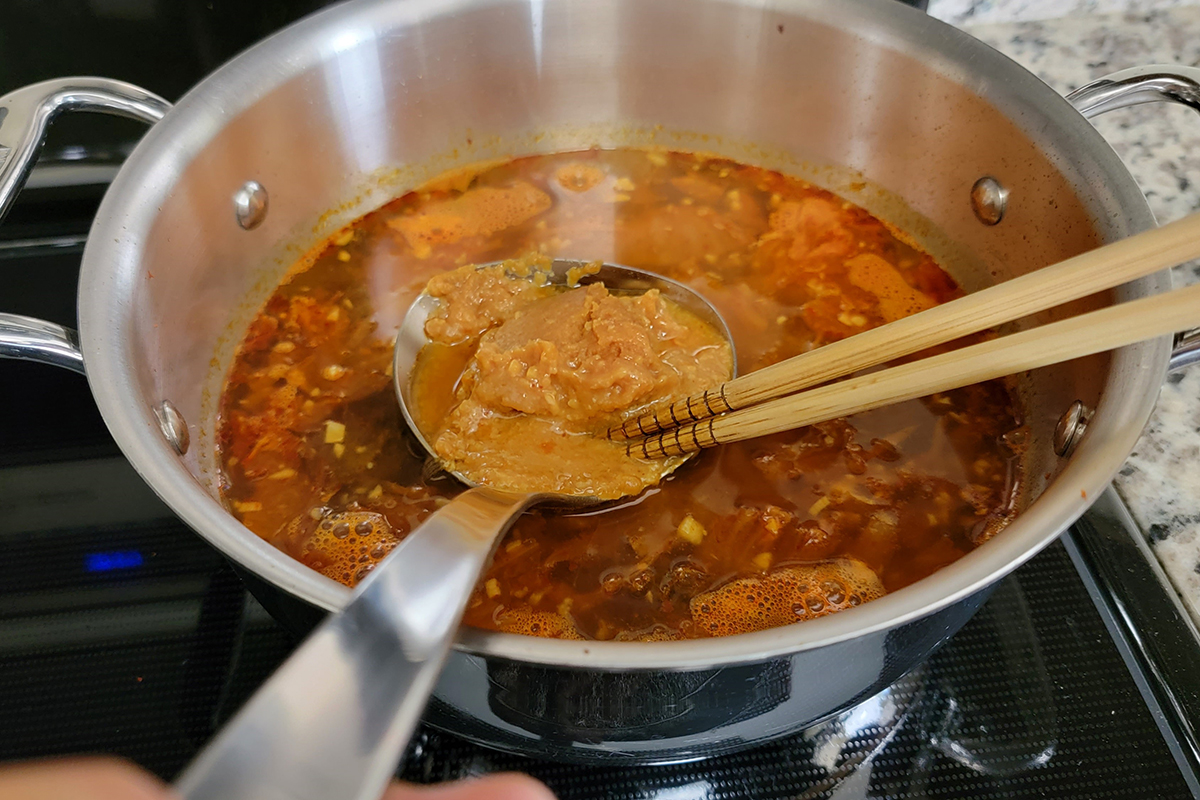
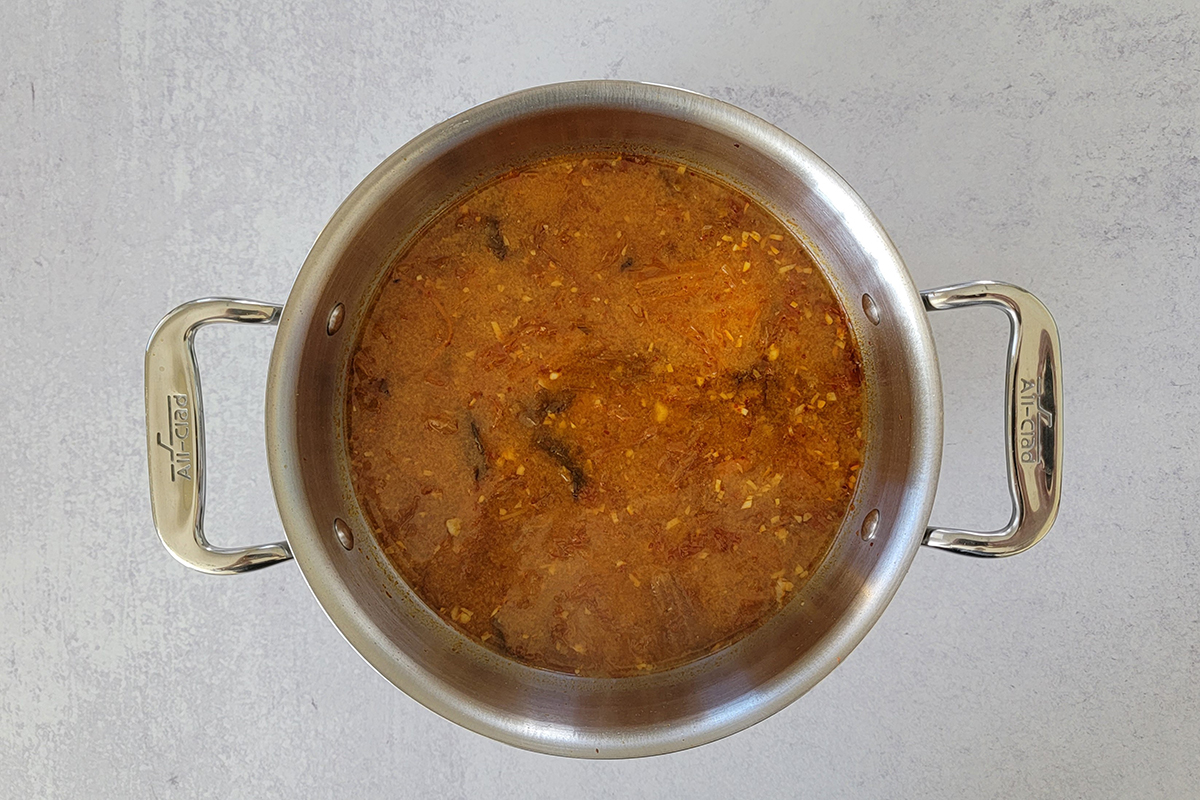
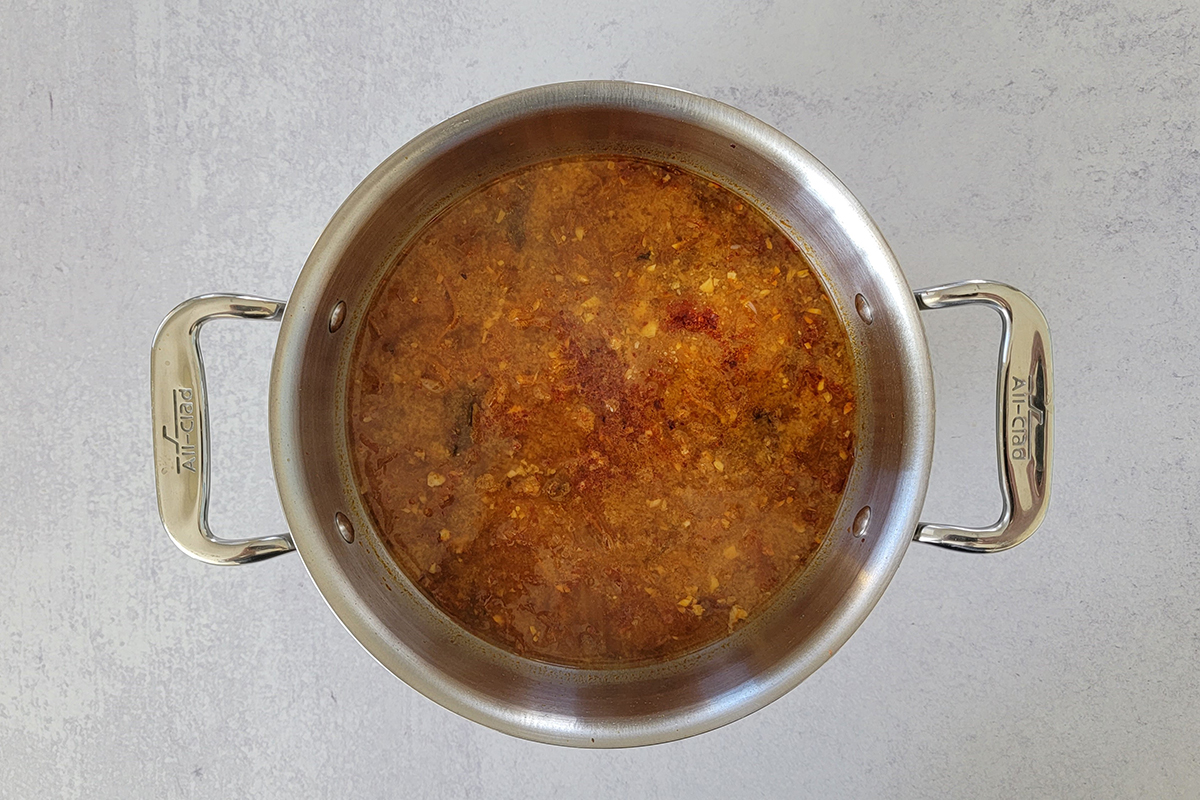
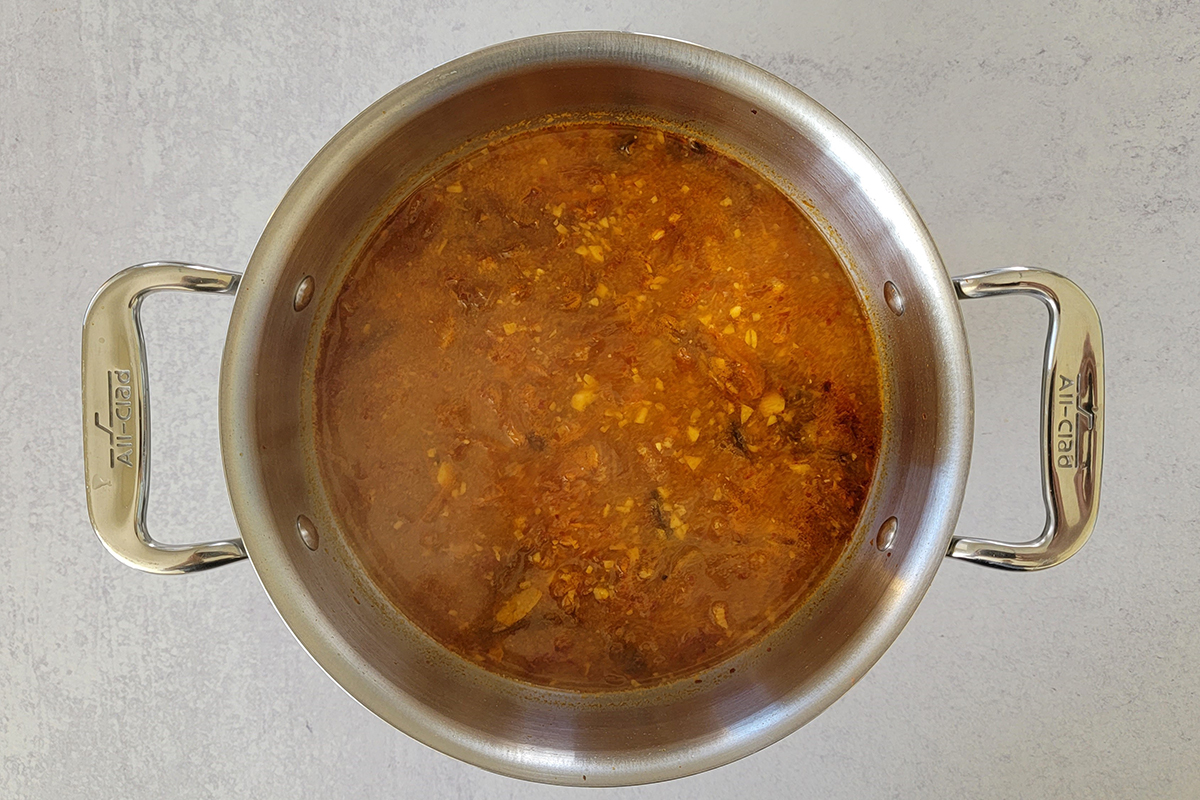
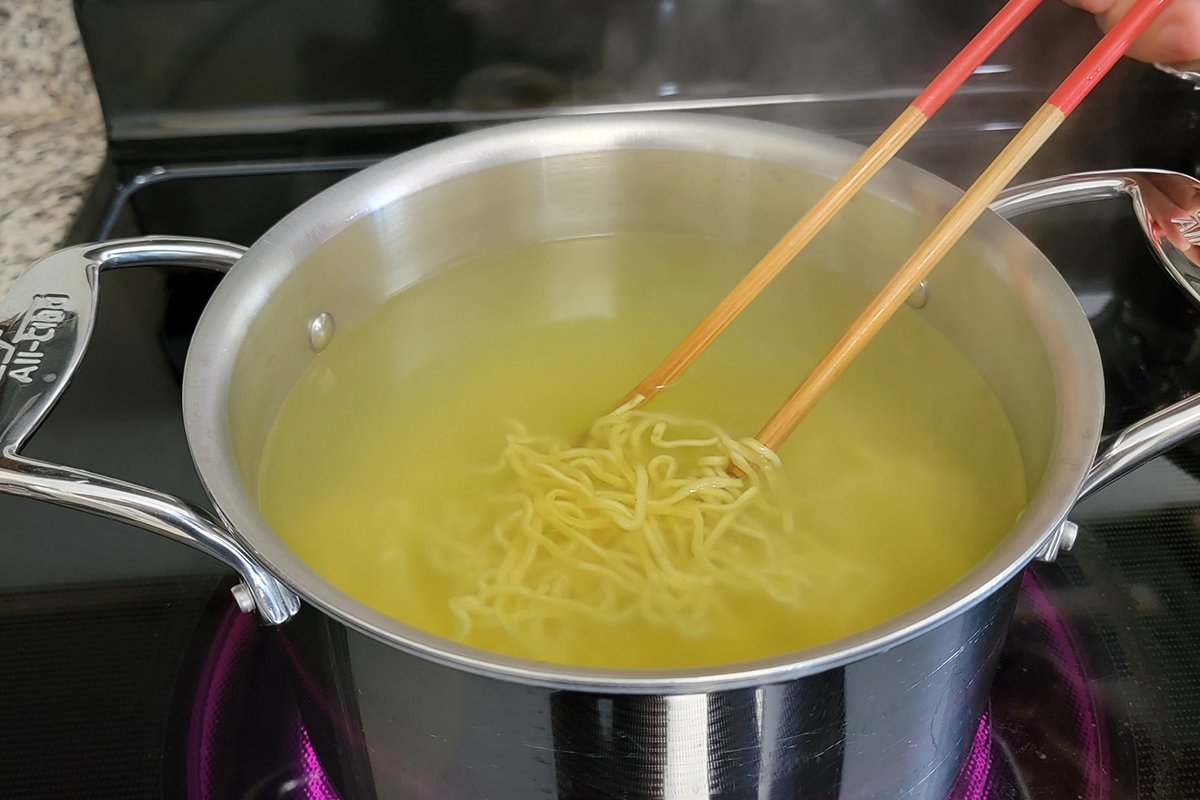
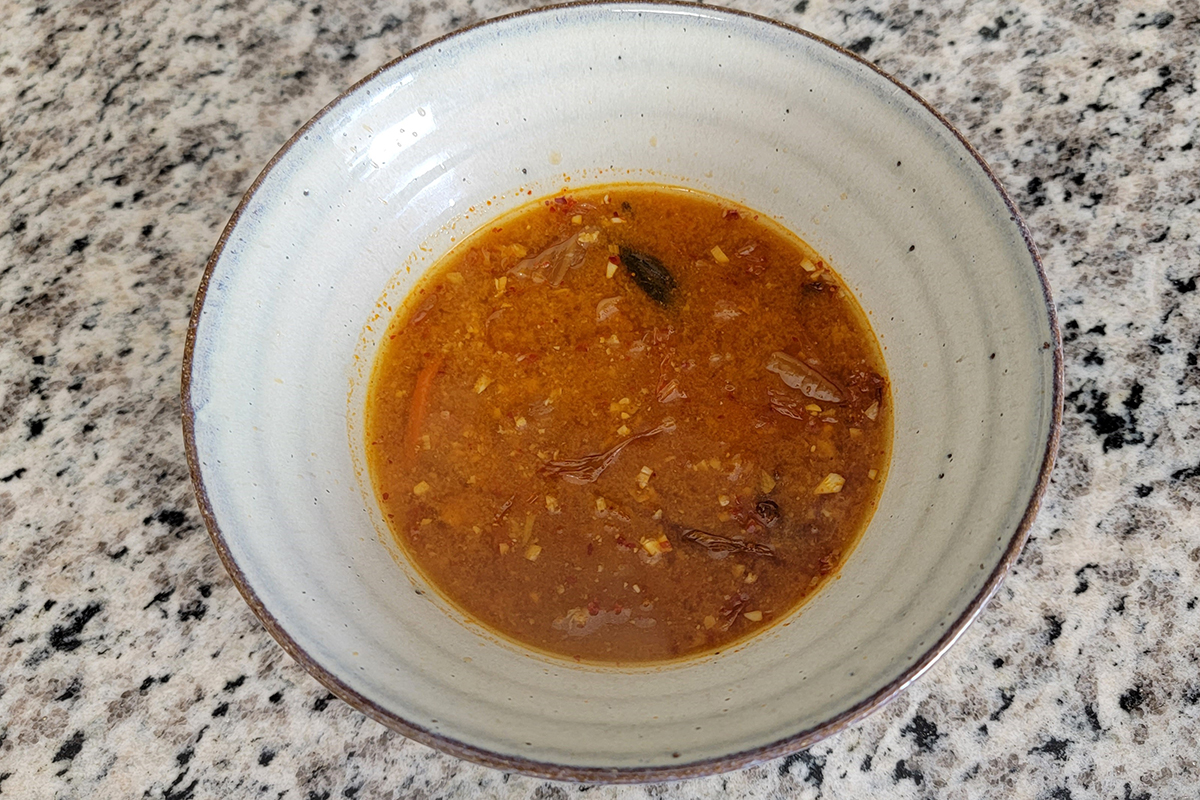
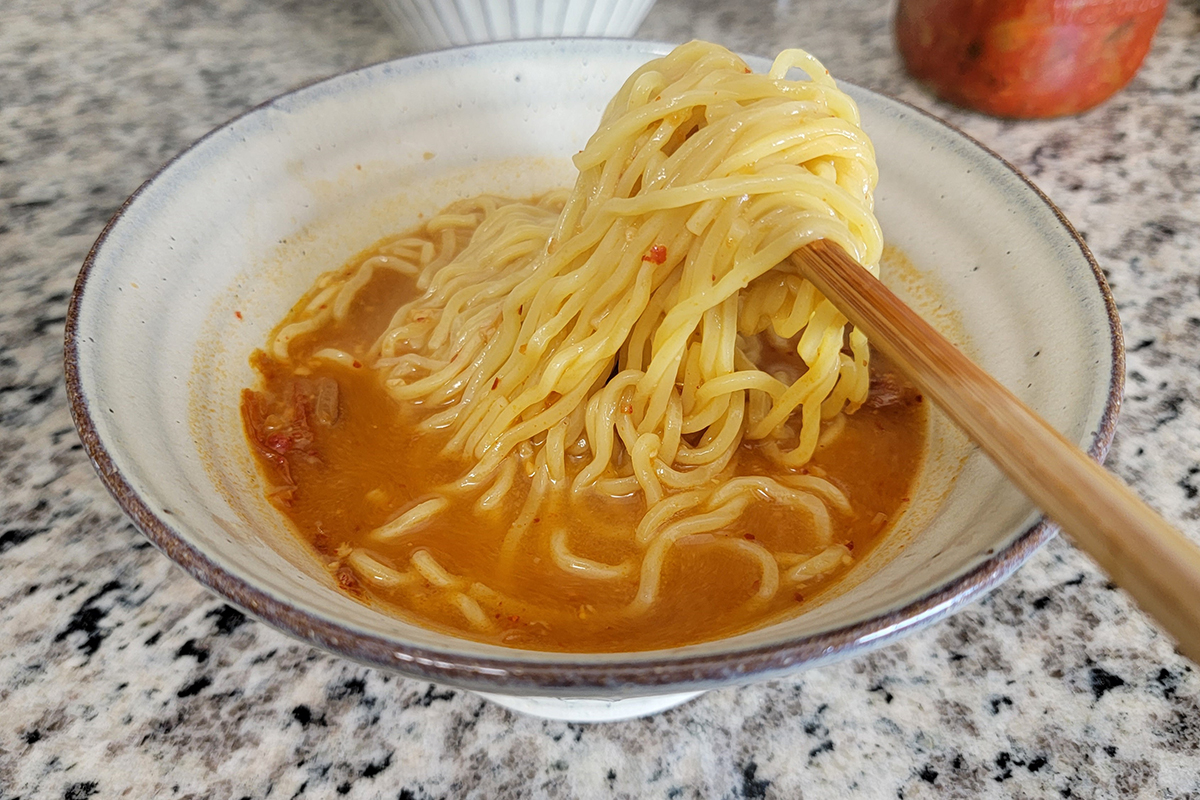
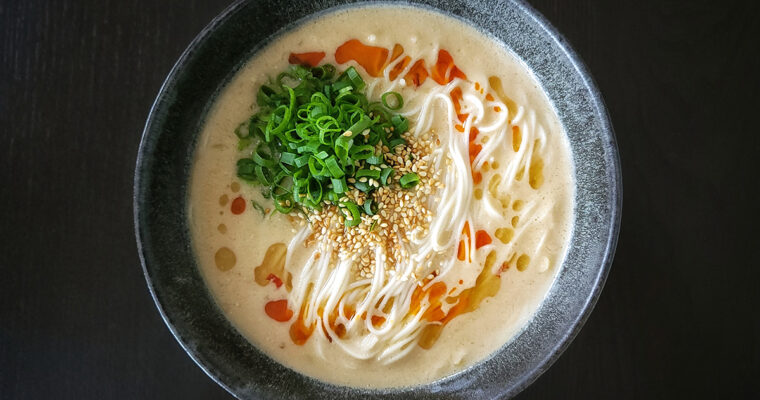
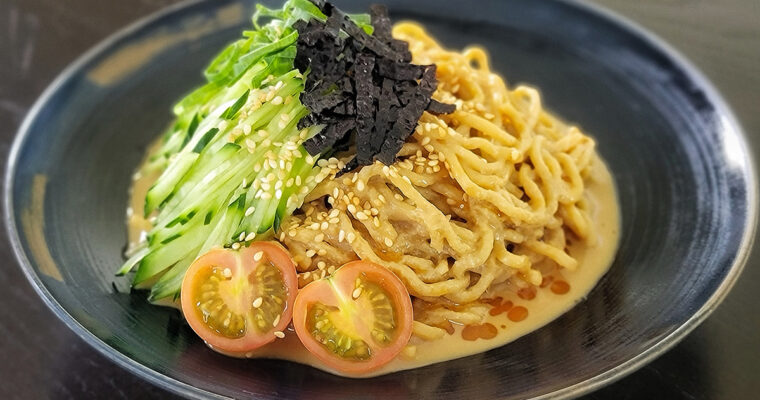



YUM! I was in the mood for miso soup, but I also have gochujang and kimchi so I found this recipe. I don’t have gochugaru, so I used 1/4 tsp of Indian hot chili powder and about 1/2 tsp of gochujang. I added a sliced onion, carrots, corn, and green beans. So delicious! I wouldn’t have thought to add sugar but it was great. Super savory and perfect for a cold day (or any day!)
Hi Liz,
So happy to hear that you enjoyed it! We would love to know what twist the Indian hot chili powder added. We hope you come back to try other miso and/or kimchi related recipes 🙂
Thank you,
Akiko & Peter
Hello. I plan to try out this dish, it looks really tasty. But….I have one misgiving.
The main benefit of kimchi is the the health giving aspect of the ‘good bacteria’ it contains. The cooking process will kill this bacteria which is a shame.
Great graphics and explanation of how to make the dish.
Andrew
Hi Andrew,
Thanks for the comment and feedback!
You’re correct about killing the good bacteria of kimchi by cooking.
That said, this recipe (or ramen in general) isn’t for the purpose of health benefits — Ramen=a guilty pleasure, isn’t it? At least for me, it is.
Speaking of gut-health, in this recipe, I also use miso which is also a “good-for-your-gut” category food. Some may say, “why do you cook miso?” or “you’re killing the good bacteria of miso by cooking.”
The answer is simple — for the flavor. The same goes for the kimchi.
Personally, I eat many variety of other fermented foods (miso, shio koji, nukazuke, natto, vegan yogurt etc.) on a daily basis without applying heat. So, killing the bacteria of kimchi in ramen once in a blue moon may not have any negative impact on my body.
Unless someone is a raw vegan, we all cook a variety of vegetables in multiple different ways to make majority of our food which results killing the majority of nutrients/bacteria in most cases. But, there’s a time and place to balance the flavor or the added health benefits.
I hope this ramen still looks appealing for you to give a try!
Akiko